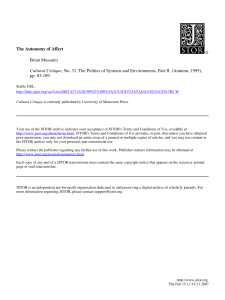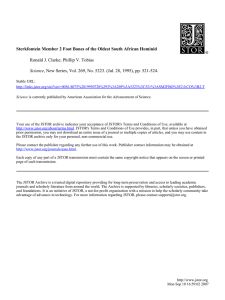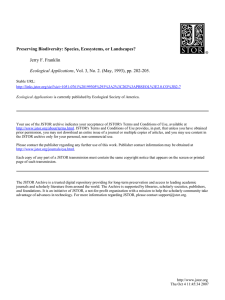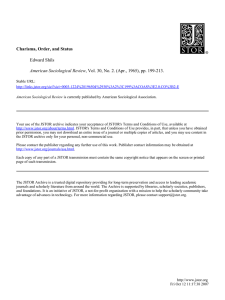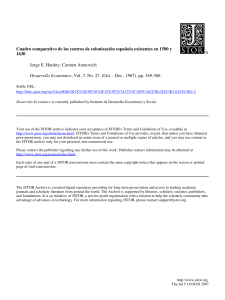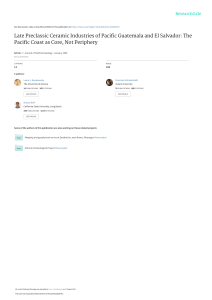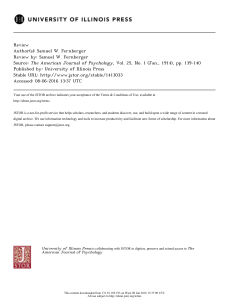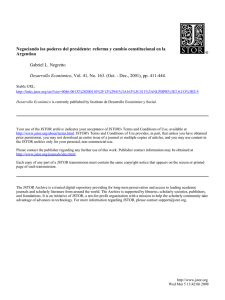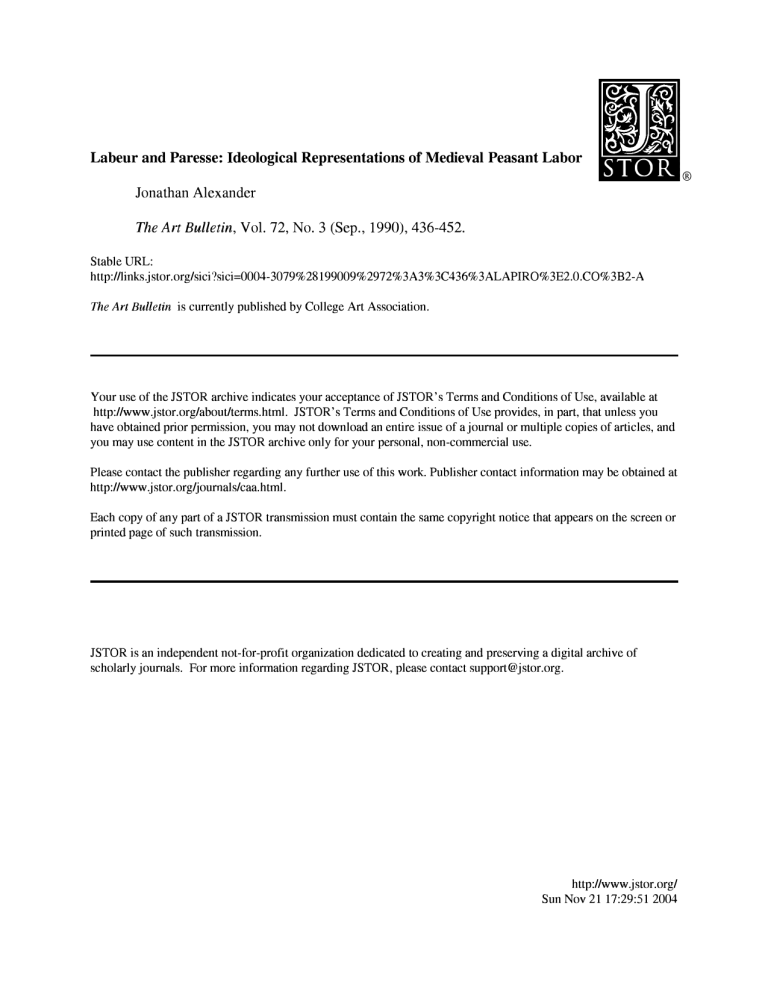
Labeur and Paresse: Ideological Representations of Medieval Peasant Labor Jonathan Alexander STOR ® The Art Bulletin, Vol. 72, No. 3 (Sep., 1990), 436-452. StableURL: http://links.jstor.org/sici?sici=0004-3079%28199009%2972%3A3%3C436%3ALAPIR0%3E2.0.C0%3B2-A The Art Bulletin is currently published by College Art Association. Your use of the JSTOR archive indicates your acceptance of JSTOR's Terms and Conditions ofUse, available at http://www.jstor.org/about/terms.html. JSTOR's Terms and Conditions ofUse provides, in part, that unless you have obtained prior permission, you may not download an entire issue of a joumal or multiple copies of articles, and you may use content in the JSTOR archive only for your personal, non-commercial use. Please contact the publisher regarding any further use of this work. Publisher contact information may be obtained at http://www.jstor.org/joumals/caa.html. Each copy of any part of a JSTOR transmission must contain the same copyright notice that appears on the screen or printed page of such transmission. JSTOR is an independent not-for-profit organization dedicated to creating and preserving a digital archive of scholarly joumals. Por more information regarding JSTOR, please contact support@jstor.org. http://www.jstor.org/ SunNov 21 17:29:51 2004 IDEOLOGICAL REPRESENTATIONS OF MEDIEVAL PEASANT LABOR 2 February, Condé Tres Riches Heures, fol. 2v. Chantilly, Musée As indicated above, it is not possible to consider earlier Calendar landscapes as "purely descriptive," but neverthe­ less Panofsky offered an important suggestion here. In spite of this, the ideology behind the representations in Berry's manuscripts has not yet been thoroughly investigated. Mil­ lard Meiss, for example, chose largely to ignore it by con­ centrating instead on stylistic criticism to define hands and on iconographical analysis of motifs and details. He traced, 16 Vienna, Óst. Nationalbibl., Cod. s.n. 2644, fol. 55. Tacuinum sanitatis in medicina, facs. with commentary F. Unterkircher (Codices Selecti, v1, 6*), Graz, 1966-67; Meiss, fig. 691. 17 S. Moralejo Álvarez, "Marcolfo, el espinario, priapo: Un testimonio iconografico Gallego," Primera Reunion Gallega de Estudios Clasicos, Santiago de Compostela, 1981, 331-355, esp. p. 355, fig. 3. I am very grateful to Professor Moralejo for giving me a copy of his article. The Characters of Theophrastus (Loeb Classical Library), ed. J.M. Ed­ monds, London-New York, 1929. The "agroikos" will sit clown with his cloak above his knee and thus expose himself, p. 69. Also under Bdeluria, "Buffonery," the buffoon will lift his shirt in the presence of freeborn women, p. 49. Panofsky noted that a reproduction of the February min18 439 for example, sorne of the images in the Calendar to similar images in Italian art, without exploring the purpose and meaning of such borrowings and of the modifications and alterations thereby made to the Northern cycle. Panofsky's phrase "antithetical characterization of di­ vergent milieus" seems to leave open the possibility that the artists intended a sympathetic contrast of the toil and hardship of the peasants, sorne of whom at the same time are able to relax, even if not in such great splendor as their lord. However, the explicit nudity of the most distant man and woman, who reveal their sexual parts, suggests a dif­ ferent interpretation. This depiction should be contrasted with the more restrained rendering of the woman raising her skirt to show her petticoat in the foreground, a motif also found in the northern Italian late fourteenth-century Tacuinum Sanitatis, a medical health handbook now in Vi­ enna, where the scene represents Winter as one of the four seasons (Fig. 3). 16 If the Limbourgs' source for this partic­ ular motif was, as seems certain, a similar Italian repre­ sentation, they have first transferred it to a different con­ text and then deliberately altered it. I would suggest that we interpret the explicit nudity not as a piece of "Northern realism," as Panofsky does, but as an ideological representation showing the peasants as un­ cultured, boorish, and vulgar. A similar interpretation of the miniature has recently been suggested by Serafín Mor­ alejo Álvarez, in a significant analysis of nudity in a range of images in Romanesque sculpture. 17 Moraleja draws at­ tention to both literary descriptions and sculptural repre­ sentations of Marculf the Fool, the opponent of King Sol­ omon the Wise, in which the size of Marculf's sexual member is emphasized, and he links these with the topos in Classical literature, for example, Theophrastus, of the immodesty of the rustic. 18 Moraleja also draws attention to the sexual implications of the Spinario figure as used in Romanesque sculpture, and quotes Classical texts known to the Middle Ages in­ dicating spring as a time of renewed sexual activity. We should ask, therefore, whether in the relatively private space of the early fifteenth-century manuscript book, these figures were subjected to the voyeuristic gaze of the duke. 19 Other images in the duke's manuscripts may confirm such a suspicion: for example, the erotic emphasis on Eve's nu­ dity after the Fall as shown on folio 25v, or the torture of the half-naked Saint Catherine in the earlier Be/les Heures, also illuminated for the duke by the Limbourg Brothers. 20 iature had to be retouched to bowdlerize it when it was used as a Christ­ mas cover of Life Magazine. 19 For the power of the male gaze, see the well-known article by L. Mul­ vey, "Visual Pleasure and Narrative Cinema," Screen, xv1, 3, 1975, 6-18, repr. in Art after Modemism. Rethinking Representation, ed. B. Wallis and M. Tucker, New York and Boston, 1984, 361-373. 2º Cloisters Museum of the Metropolitan Museum of Art, New York. M. Meiss and E. Beatson, The Be/les Heures of Jean, Duke of Berry, New York, 1974, fols. 17r-v. Note also on fol. 191 of the same Hours, the extraordinary image of the temptation of a Christian by a courtesan who places her hand under his tunic to arouse him.
